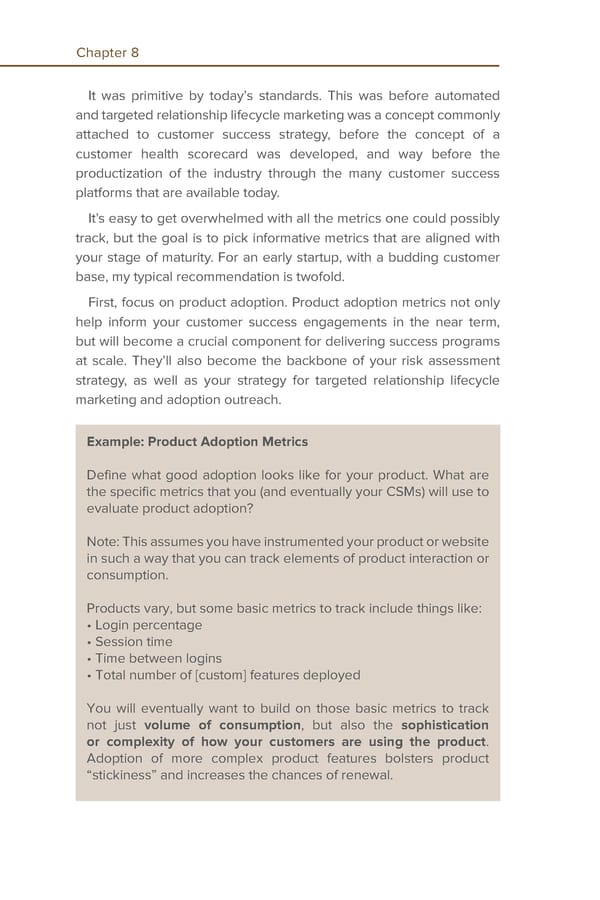Chapter 8 It was primitive by today’s standards. This was before automated and targeted relationship lifecycle marketing was a concept commonly attached to customer success strategy, before the concept of a customer health scorecard was developed, and way before the productization of the industry through the many customer success platforms that are available today. It’s easy to get overwhelmed with all the metrics one could possibly track, but the goal is to pick informative metrics that are aligned with your stage of maturity. For an early startup, with a budding customer base, my typical recommendation is twofold. First, focus on product adoption. Product adoption metrics not only help inform your customer success engagements in the near term, but will become a crucial component for delivering success programs at scale. They’ll also become the backbone of your risk assessment strategy, as well as your strategy for targeted relationship lifecycle marketing and adoption outreach. Example: Product Adoption Metrics Define what good adoption looks like for your product. What are the specific metrics that you (and eventually your CSMs) will use to evaluate product adoption? Note: This assumes you have instrumented your product or website in such a way that you can track elements of product interaction or consumption. Products vary, but some basic metrics to track include things like: • Login percentage • Session time • Time between logins • Total number of [custom] features deployed You will eventually want to build on those basic metrics to track not just volume of consumption, but also the sophistication or complexity of how your customers are using the product. Adoption of more complex product features bolsters product “stickiness” and increases the chances of renewal.
 Customer Experience and Success Page 11 Page 13
Customer Experience and Success Page 11 Page 13